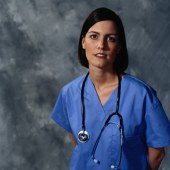
THURSDAY, Sept. 27 (HealthDay News) — School debt and income expectations are two main reasons many medical students decide to enter a high-paying specialty instead of becoming primary care doctors, according to a new long-term study.
The United States has a shortage of primary care doctors, who are among the lowest paid of all physicians. Primary care doctors are front-line health providers and usually are the first to diagnose illnesses. They also refer patients to specialists and coordinate care.
Primary care includes internal medicine, family practice and pediatrics.
In this study, researchers surveyed more than 2,500 medical students attending either New York Medical College or the Brody School of Medicine at East Carolina University between 1992 and 2010. The students were surveyed in their first and fourth years about the area of medicine they planned to enter, their expected debt upon graduation, their anticipated annual income five years after completing residency and the importance they placed on income.
Medical students who anticipated high levels of debt and placed a premium on high income were more likely to enter a high-paying medical specialty — such as dermatology, radiology or anesthesiology — than to enter primary care.
By graduation, 30 percent of the students who entered medical school with the intention of becoming a primary care doctor switched their preference to a high-paying specialty.
Those who changed their minds about becoming primary care doctors placed a higher value on income and had an 11 percent higher expected debt load than those who followed through on their goal of become primary care doctors.
The study was published online Sept. 19 in the journal Medical Education.
In 2010, 86 percent of medical students graduated with some education debt, according to the Association of American Medical Colleges. The average debt was $158,000, but 30 percent of graduates were more than $200,000 in debt.
“While the amount of debt medical students take on is well known, there hasn’t been much research to assess how students respond to this pressure,” study lead author Dr. Martha Grayson, senior associate dean of medical education at Albert Einstein College of Medicine at Yeshiva University in New York City, said in a university news release.
These findings suggests that measures such as incentive pay, debt forgiveness, additional scholarships and higher reimbursement for primary care services should be considered in order to meet the growing need for primary care doctors, the researchers said.
More information
The American Medical Association has more about health care careers.

